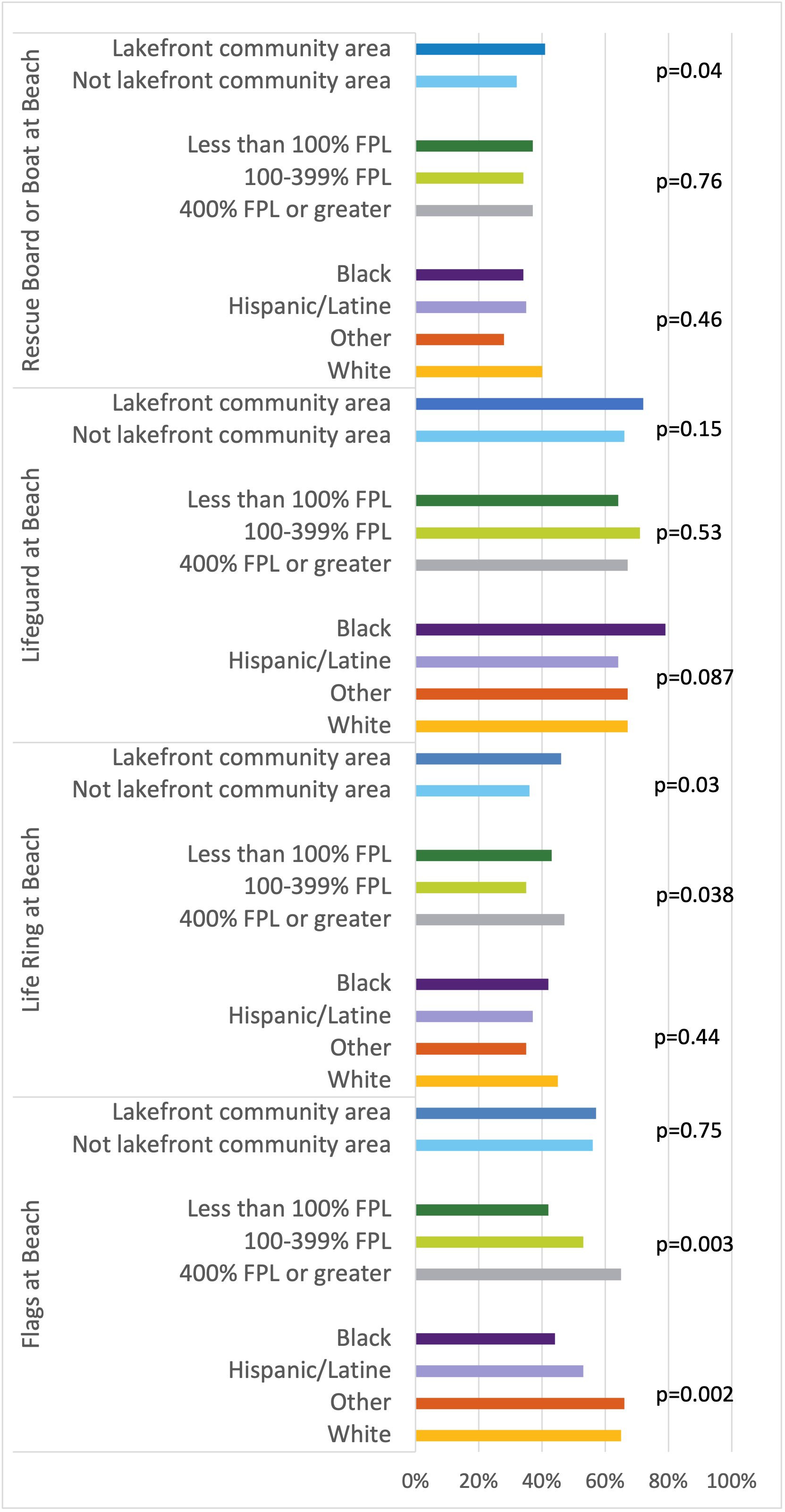Injury Prevention
Session: Injury Prevention 2
388 - Swimming in Lake Michigan and Awareness of Water Safety Features among Chicago Parents
Saturday, May 4, 2024
3:30 PM - 6:00 PM ET
Poster Number: 388
Publication Number: 388.1189
Publication Number: 388.1189

Michelle Macy, MD, MS (she/her/hers)
Associate Professor
Ann & Robert H. Lurie Children's Hospital of Chicago
Chicago, Illinois, United States
Presenting Author(s)
Background: Lake Michigan is the deadliest of the Great Lakes. Open water drowning disproportionately impacts youth of color. Chicago’s 28 miles of Lake Michigan shoreline with 24 public beaches provide a unique opportunity for families to engage in water recreation activities with lifeguard supervision available from 11am to 7pm every day during the summer swim season. The Illinois Lake Michigan Rescue Equipment Act required ring buoys to be installed at beaches and piers in summer 2022. Understanding patterns of beach use and awareness of water safety features among families in Chicago can help inform public health efforts to reduce drowning events.
Objective: To describe when and where Chicago families are most likely to report swimming at the lake and assess for demographic characteristics associated with parents' awareness of safety features when at Lake Michigan beaches.
Design/Methods: Data were collected from Oct-Nov 22 through the Voices of Child Health in Chicago Parent Panel Survey, in English and Spanish via web and phone to parents in households with child(ren) < 18 from all 77 Chicago neighborhoods. Questions elicited parents’ experience swimming in Lake Michigan and awareness of water safety features. Parents reported race and ethnicity and other demographic characteristics. Descriptive and chi-square statistics were survey-weighted to be representative of Chicago’s population. We hypothesized that swimming during lifeguarded hours and awareness safety equipment would be higher for families who lived in a lakefront community area, had higher household income, and were White, non-Hispanic due to historic exclusions of communities of color from swimming spaces.
Results: Responses from 1129 Chicago parents were analyzed (Table 1). 61% reported swimming in Lake Michigan. Most families reported only doing so during hours when a lifeguard is on duty, without differences by race and ethnicity, family income level or living in a lakefront community area (Table 2). Swimming in areas other than beaches was more common among families with high and low household income levels (19% and 16%), compared to families with moderate household income (8%). Overall parents noticed lifeguards (69%), flags that indicate water conditions (56%), life rings (41%), rescue board or boat (36%) as safety features where they swim. Safety feature awareness differed by some demographic characteristics (Figure).
Conclusion(s): There were no significant differences in where and when Chicago families report swimming in Lake Michigan. Drowning prevention efforts should raise awareness of water safety features.
.jpg)
.jpg)

